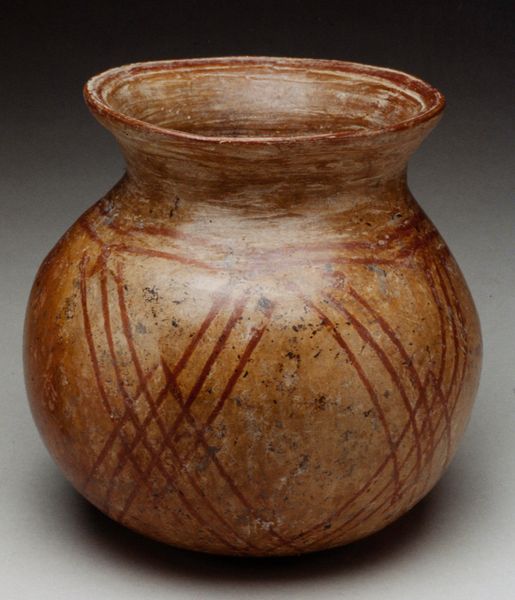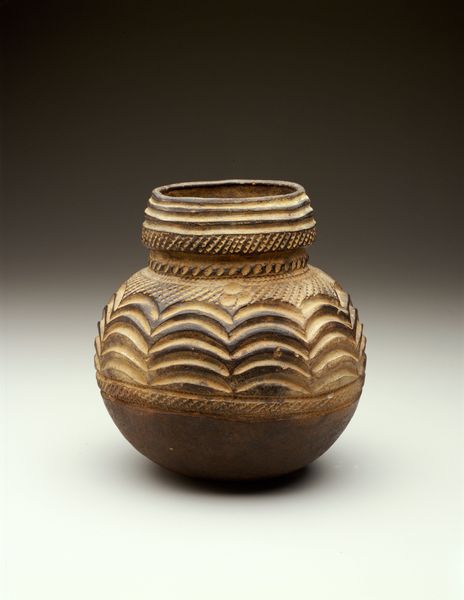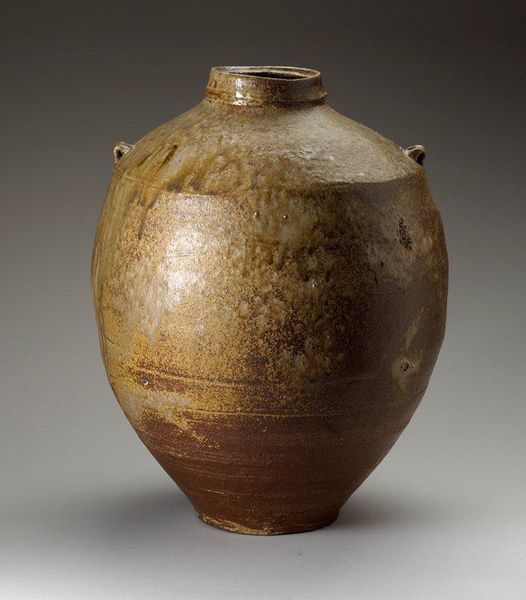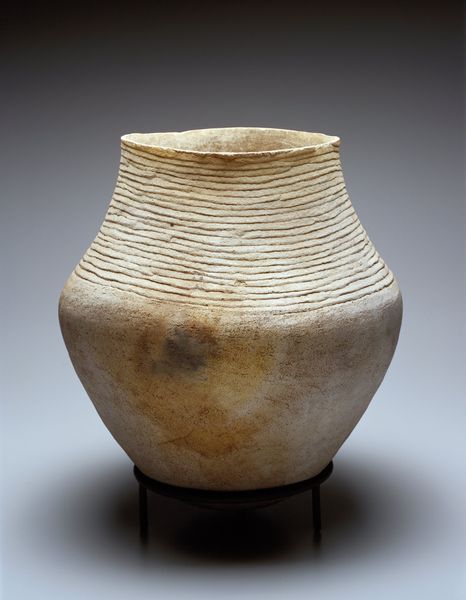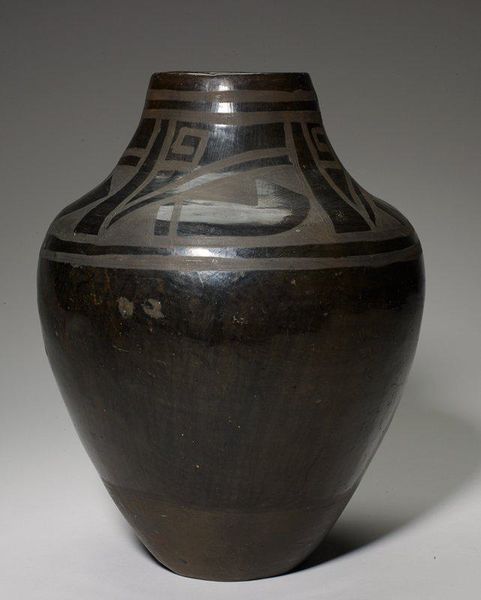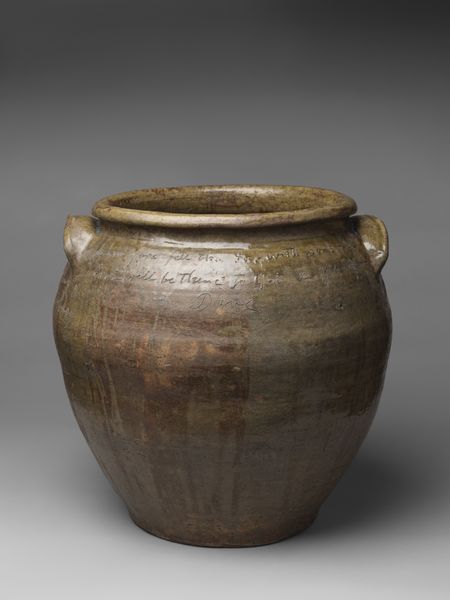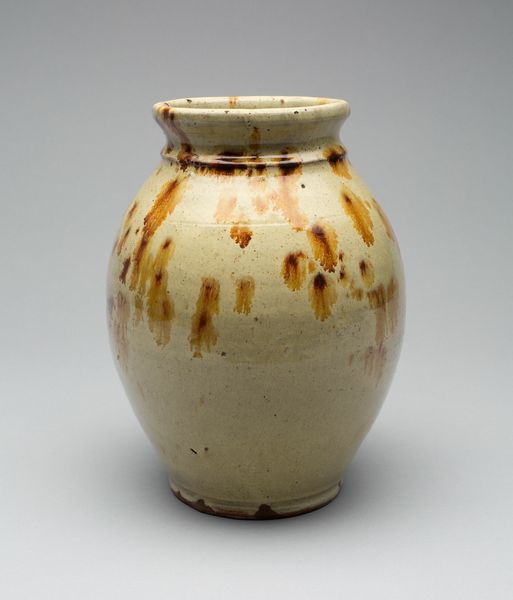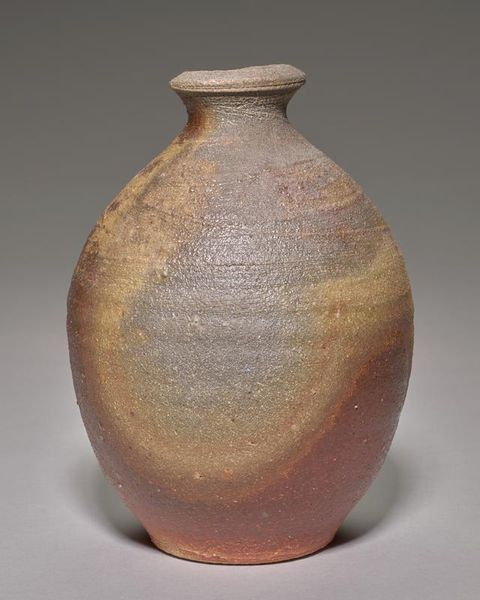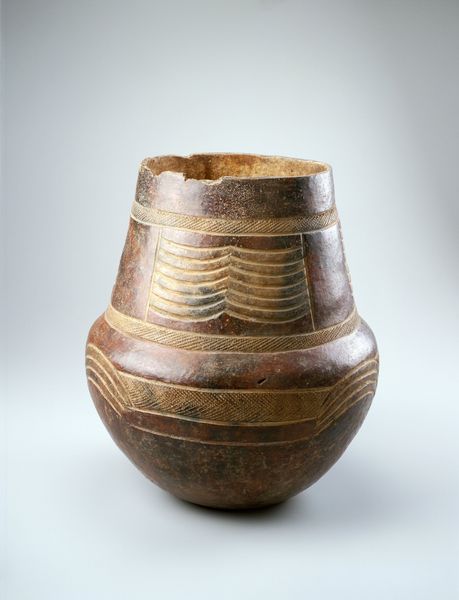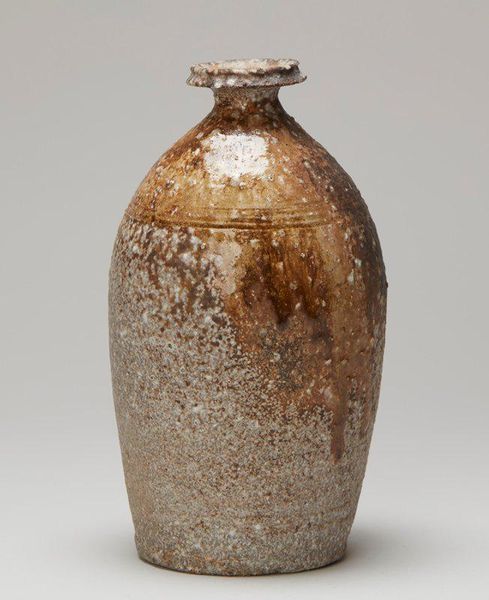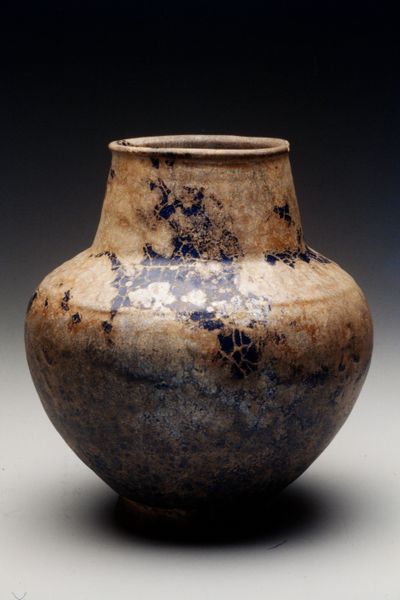
assemblage, ceramic, earthenware
#
assemblage
#
ceramic
#
japan
#
earthenware
#
stoneware
#
ceramic
Dimensions: 22 1/2 × 20 × 20 in. (57.15 × 50.8 × 50.8 cm)
Copyright: No Known Copyright
Curator: Right now we're standing in front of Kishino Kan's "Jar (Ōgame)," an earthenware assemblage from 2010, showcasing contemporary Japanese ceramic traditions. Editor: Immediately I see Wabi-sabi, right? The irregular shape, the earthy tones. It feels less about perfect symmetry and more about...acceptance of imperfection. Sort of like my dating life, haha. Curator: Indeed! Kishino's work directly addresses the idealized form so frequently showcased in ceramic traditions. By deliberately embracing asymmetry and surface variations, he creates dialogue questioning accepted standards of beauty in the art world and greater socio-cultural settings. Editor: Exactly! And look at how the glaze drips down the sides, creating these fascinating rivulets. I bet that was accidental, right? Happy accidents are the best kind, makes me feel like a rebel who forgot the rules even exist, hahaha! Curator: More than likely a controlled accident. The glaze application, firing temperatures, and even the positioning of the piece in the kiln could be altered to invite drips to be created on certain parts of the form. These techniques embrace chance as a method but are nonetheless methodically planned, to invite novel aesthetic considerations when displayed to museum patrons. Editor: Alright, alright. But think of the historical precedent; from utilitarian vessels to objects elevated within museum environments, the power dynamics that affect everyday understanding is worth remembering! Curator: Well, in considering the politics, the “Jar (Ōgame)” speaks of an ongoing cultural discussion where Eastern artisans grapple with Western standards of visual refinement. Kishino confronts historical and modern systems for what is considered tasteful—and how that's tied to colonial pasts. Editor: Mmh. But when I look closer I like the layered textures. A little rough, a little smooth... it makes me want to reach out and touch it. It speaks of ancient materials that exist within the present moment. Curator: In conclusion, this is a prime example of ceramics deployed to create intercultural discussion in an evolving socio-political landscape! Editor: It’s more than that; the piece asks us how we want to think about 'beauty,' as much as it pushes Japanese aesthetics toward international recognition, no? Makes one think.
Comments
No comments
Be the first to comment and join the conversation on the ultimate creative platform.
